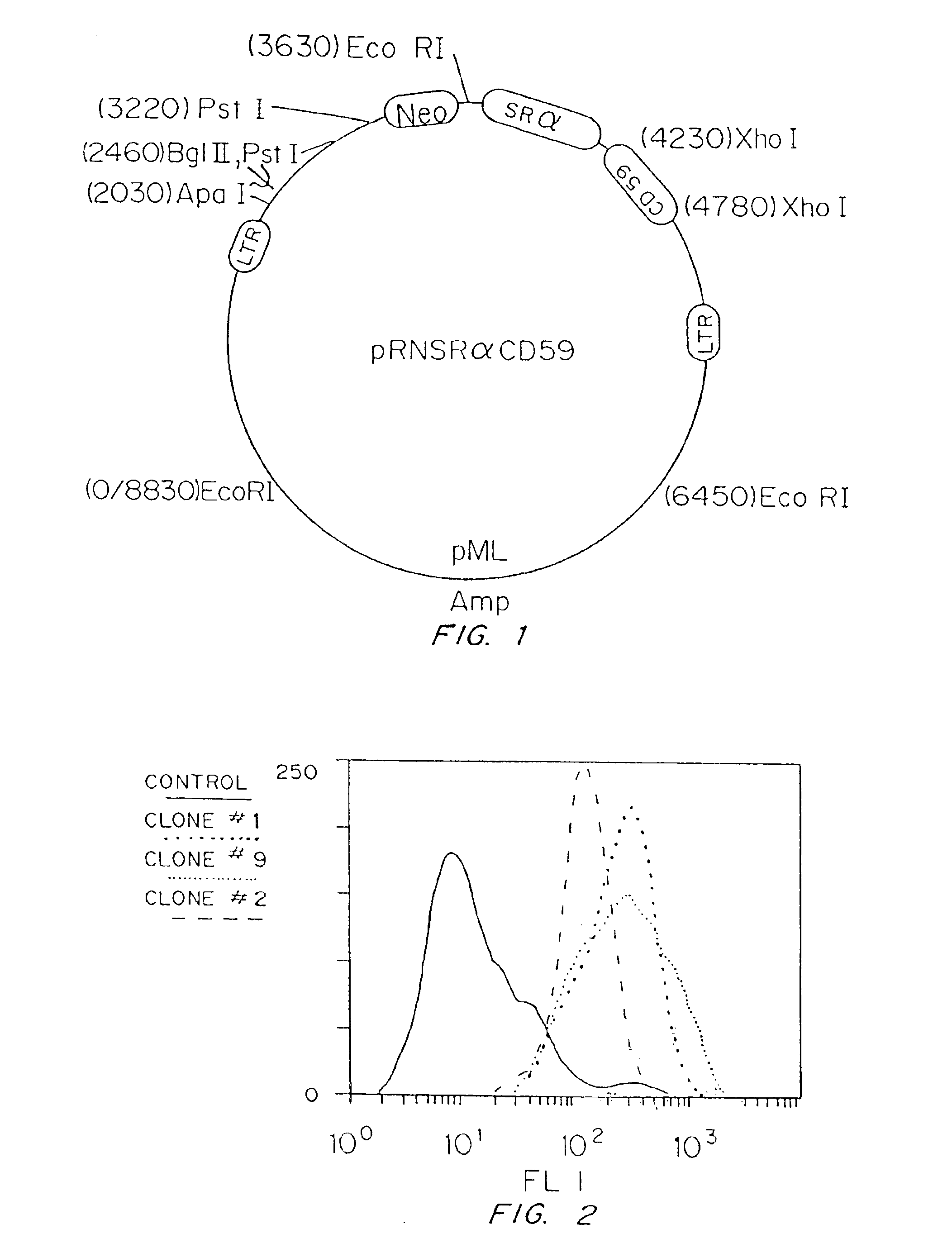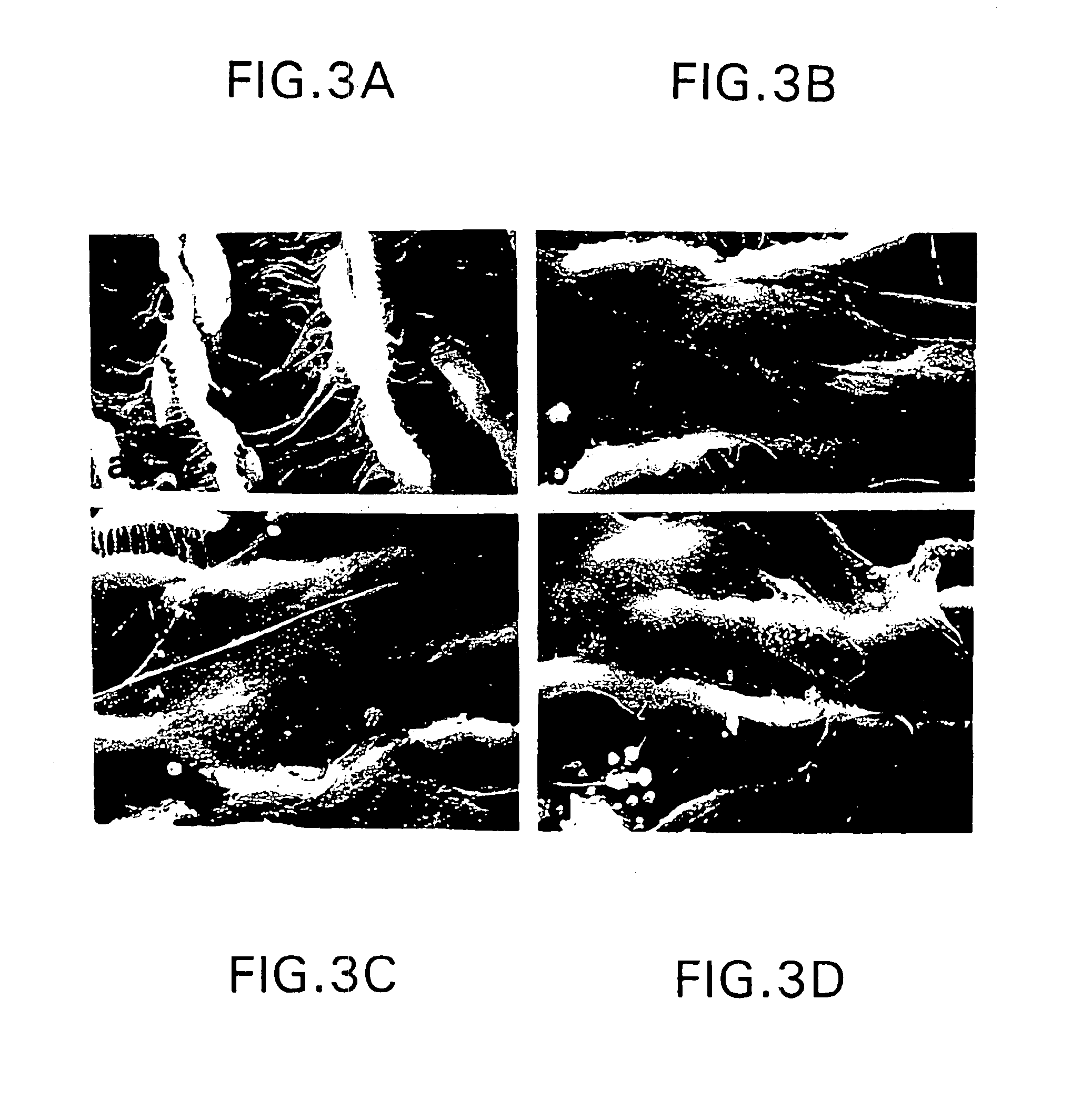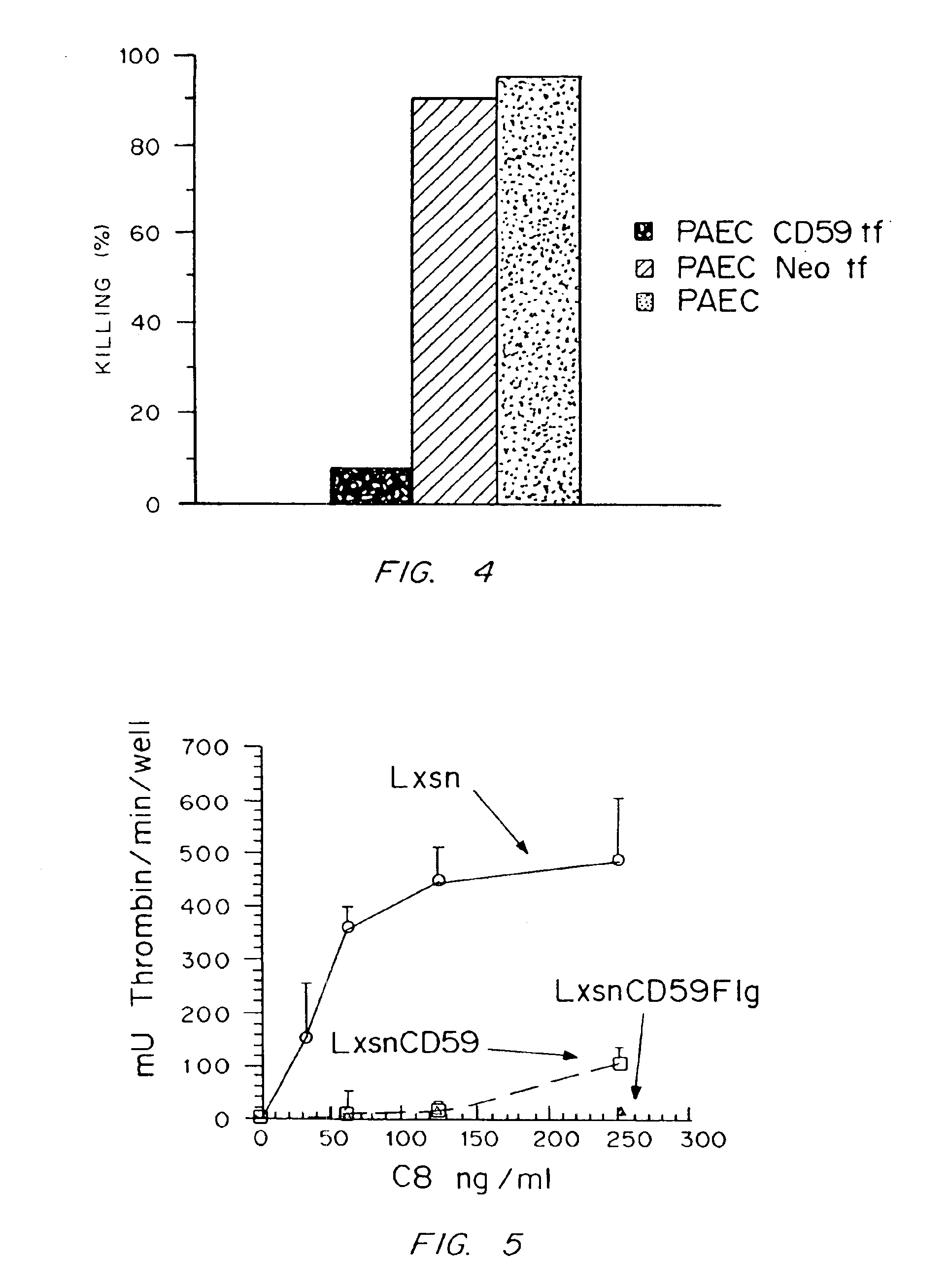Universal donor cells
a technology of endothelial cells and donor cells, applied in the field of universal donor cells, can solve the problems of organ transplant rejection and vasculitis, loss of these normal physiological processes, pathological conditions, etc., and achieve the effects of reducing cell surface mhc class ii expression, preventing both complement-mediated lysis and activation of porcine cells, and high degree of endothelial cell expression
- Summary
- Abstract
- Description
- Claims
- Application Information
AI Technical Summary
Benefits of technology
Problems solved by technology
Method used
Image
Examples
example 1
Expression of Human CD59 in Porcine Endothelial Cells Protects them from Hyperacuto Rejection by Human Complement.
[0172]This example demonstrates that when the full-length CDNA encoding the human CD59 protein is stably incorporated into the genome of a porcine aortic endothelial cell (PAEC) and expressed on the cell surface, it protects these cells from complement-mediated attack as assayed by human complement-mediated cell lysis in vitro.
[0173]Cultures of PAEC were cultured in DMEM containing 10% fetal bovine serum (FBS), 5 mM Hepes, 2 mM L-glutamine, and 1% each of penicillin and streptomycin (P / S). Prior to retroviral infection, the cells were grown to 50% confluence. Subconfluent PAEC were infected by using the amphotropic helper-free retroviral vector pRNSRalphaCD59+. The structure of this retroviral construct is shown in FIG. 1. As controls, PAEC were also infected with a control retroviral vector containing the drug selection marker gene neomycin or were uninfected. The ampho...
example 2
Stable Expression of hCD59 in Mouse Cells and which Protects the Cells from Complement Mediated Lysis.
[0180]Mouse Balb / 3T3 cells were t-ransfected with the pC8-hCD59-103 plasmid described in FIG. 6. The transfection was performed using the calcium phosphate precipitation method with 10 μg of plasmid pC8-hCD59-103 applied to approximately 106 cells. Stable transfectants were selected by cotransfecting the Balb / 3T3 cells with a neomycin resistance plasmid (pSV2-neo; Yale University, New Haven, CT; 1 μg per 106 cells) and then selecting stably expressing cell clones in the presence of qeniticin (G418; 500 μg / ml). Balb / 3T3 cells transformed with just the neomycin resistance plasmid and not the pC8-hCD59-103 plasmid were used as controls.
[0181]Stable transfectants were assessed for hCD59 expression by flow cytometry using 10 μ / ml anti-CD59 monoclonal antibody MEM-43 (Accurate Chemical and Scientific Corp., Westbury, N.Y.) or 20 μg / ml of an anti-CD59 polyclonal serum (Southeastern Wiscons...
example 3
Generation of Transgenic Mice Expressing hCD59.
[0185]In order to achieve transgenic expression of hCD59, the CMV-hCD59-SV40 transcriptional unit was removed from pCB-hCD59-103 using the restriction enzymes SpeI and ScaI. This restriction digest selectively extracts the transcription unit from the overall vector and permits purification of only the essential elements-required for expression.
[0186]The 2300 bp restriction fragment resulting from the digest was gel isolated, extensively purified through an ELUTIP column (Schleicher & Schuell, Keene, N.H.), dialyzed against pyrogen free injection buffer (10 mM Tris, pH7.4+0.1 lmM EDTA in pyrogen free water), and used for embryo injection to generate transgenic mice in accordance with the methods of Hogan et al. 1986 and Brinster et al., 1985.
[0187]50 founder putative positive offspring were tested by harvesting genomic DNA from the tail of each of these animals. 5 micrograms of this genomic DNA from each of the 50 animals was transferred...
PUM
| Property | Measurement | Unit |
|---|---|---|
| cell doubling time | aaaaa | aaaaa |
| pH | aaaaa | aaaaa |
| pH | aaaaa | aaaaa |
Abstract
Description
Claims
Application Information
 Login to View More
Login to View More - R&D
- Intellectual Property
- Life Sciences
- Materials
- Tech Scout
- Unparalleled Data Quality
- Higher Quality Content
- 60% Fewer Hallucinations
Browse by: Latest US Patents, China's latest patents, Technical Efficacy Thesaurus, Application Domain, Technology Topic, Popular Technical Reports.
© 2025 PatSnap. All rights reserved.Legal|Privacy policy|Modern Slavery Act Transparency Statement|Sitemap|About US| Contact US: help@patsnap.com



